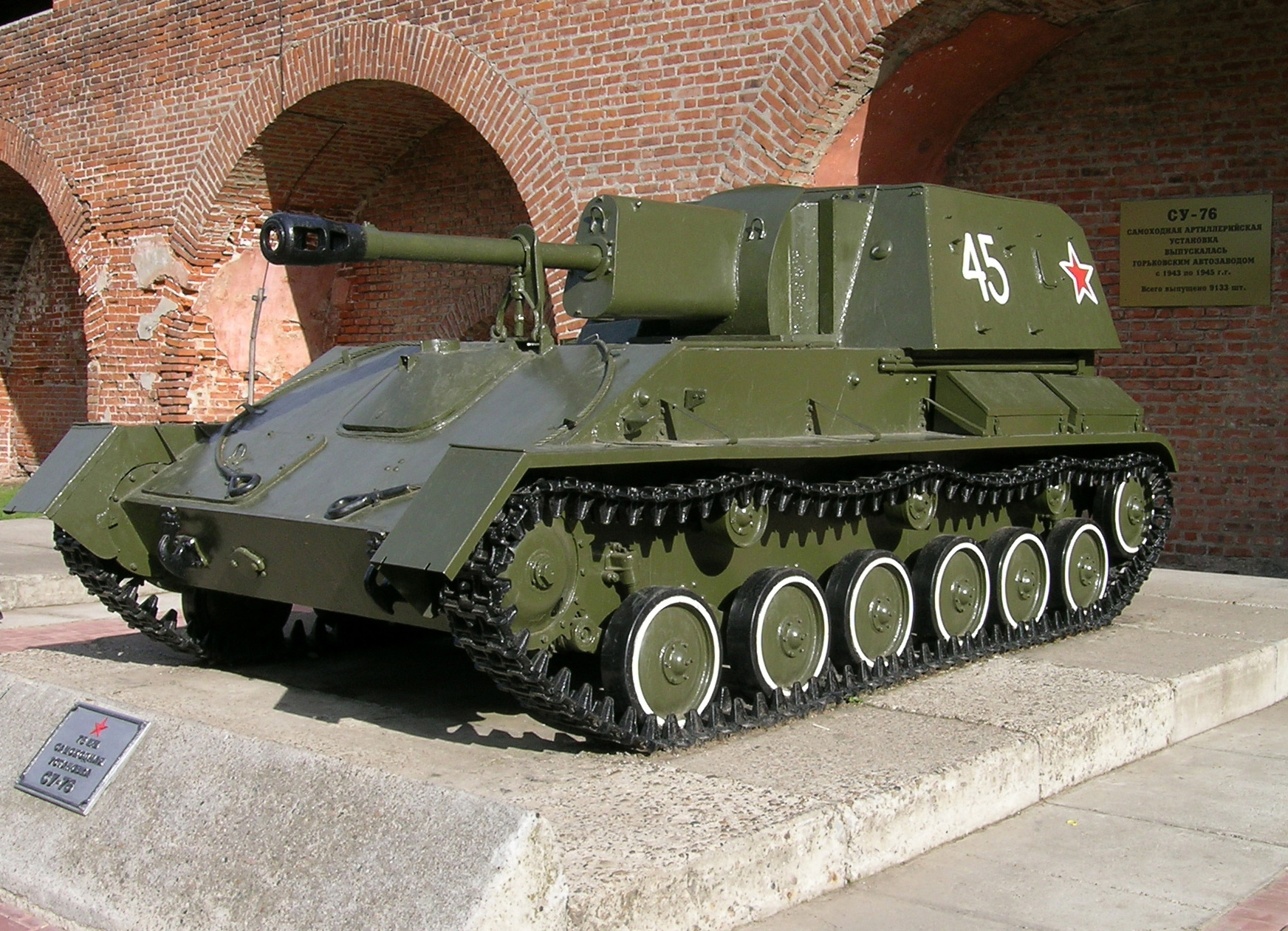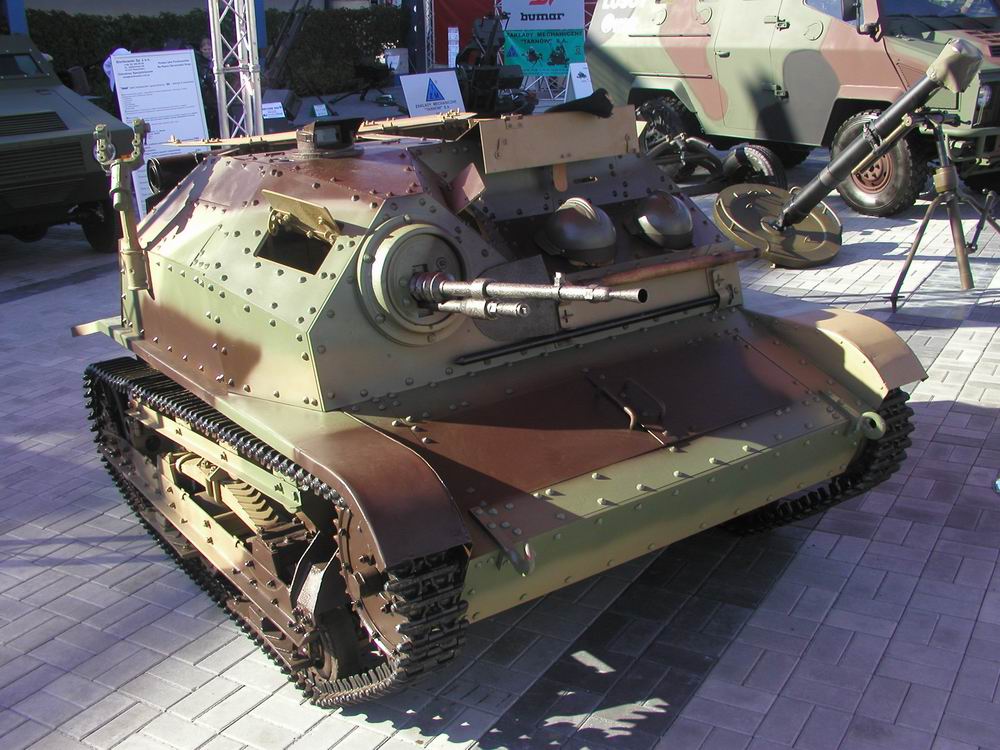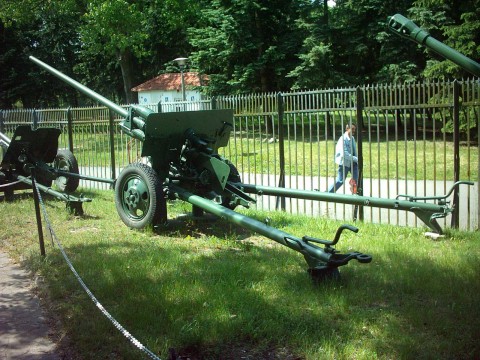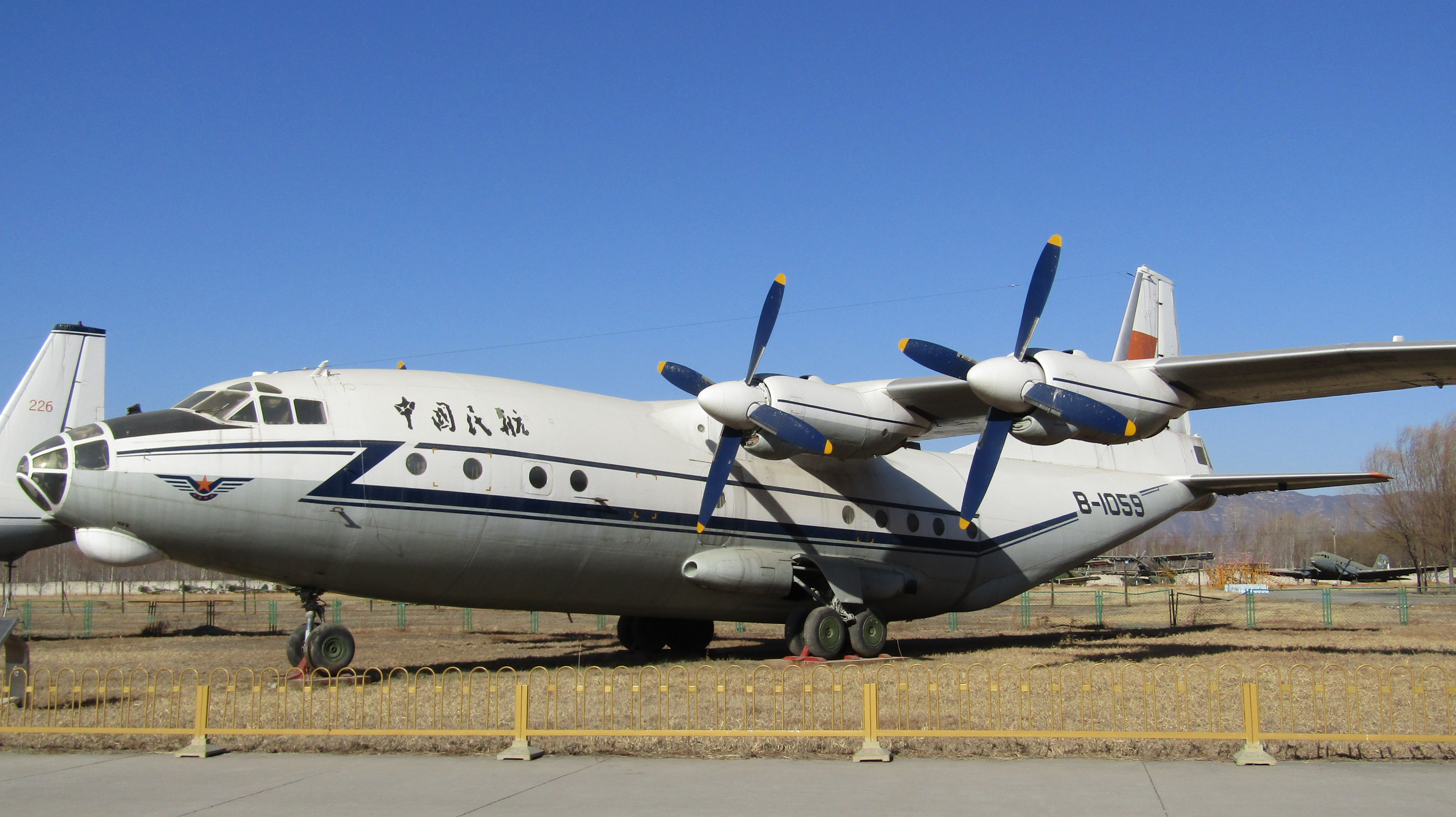|
ASU-57
The ASU-57 was a small, lightly constructed Soviet Union, Soviet assault gun specifically designed for use by Soviet Airborne Forces, Soviet airborne divisions. From 1960 onwards, it was gradually phased out in favour of the ASU-85. Development history The task to develop a lightweight assault gun for the airborne troops (with either a 57 mm gun or a 76 mm gun) was given to two design bureaus, Astrov (OKB-40) in Mytishchi and Kravtsev in Moscow. Nikolaj Astrov's OKB-40 designed the ASU-76, based on components of the T-70 light tank and the SU-76 assault gun, and armed with the new 76 mm gun D-56T. The ASU-76 turned out to be too heavy, even though the armour was only 3 mm thick, and the project was cancelled. Anatoly Kravtsev's team came up with the similar, amphibious K-73. This vehicle was armed with Charnko's 57 mm anti-tank gun Ch-51 and was even more thinly armoured than the ASU-76. This project too was shelved. In 1949, Astrov was instructed to con ... [...More Info...] [...Related Items...] OR: [Wikipedia] [Google] [Baidu] |
Assault Gun
An assault gun (from , , meaning "assault gun") is a type of armored infantry support vehicle and self-propelled artillery, mounting an infantry support gun on a protected self-propelled chassis, intended for providing infantry with heavy direct fire support during engagement, especially against other infantry or fortified positions, secondarily also giving some armored protection and anti-armor capability. Assault guns were pioneered by the Soviet Union and Nazi Germany during the 1930s, initially being self-propelled guns with direct fire in mind (such as the Soviet SU-5-1), with Germany introducing the first purpose-built (and purpose-named) assault gun, the , in 1940. Concept, doctrine and design The concept of the assault gun can be simplified into: a protected self propelled infantry gun, intended for the infantry brigades, in order to give infantry: mobile heavy direct fire capability against protected enemy positions and threats, which can move with infantr ... [...More Info...] [...Related Items...] OR: [Wikipedia] [Google] [Baidu] |
GAZ-M20 Pobeda
The GAZ-M20 "Pobeda" (; ''победа'' means ''victory'') is a passenger car produced in the Soviet Union by GAZ from 1946 until 1958. It was also licensed to the Poland, Polish Fabryka Samochodów Osobowych, Passenger Automobile Factory and produced there as the FSO Warszawa. Although usually known as the GAZ-M20, an original car's designation at that time was just M-20: M for "Molotovets" (the GAZ factory was named after Vyacheslav Molotov). History The first sketches of similar-looking cars were completed by Valentin Brodsky in 1938 and by Vladimir Aryamov in 1940, which revealed a growing tendency towards streamlined car design in the Soviet Union. Aryamov's two-door coupe GAZ-11-80, designed in 1940, greatly resembled the later Pobeda and was in many ways identical to it. However, after the Operation Barbarossa, German invasion of 1941 military priorities delayed the work on the new car and the factory was switched to military production. The first Pobeda was developed in th ... [...More Info...] [...Related Items...] OR: [Wikipedia] [Google] [Baidu] |
Tankette
A tankette is a tracked armoured fighting vehicle that resembles a small tank, roughly the size of a car. It is mainly intended for light infantry support and scouting.T-27 Tankette (from the 'battlefield.ru' website, with further references cited. Accessed 2008-02-21.) Colloquially it may also simply mean a small tank. Several countries built tankettes between the 1920s and 1940s, and some saw limited combat in the early phases of . The vulnerability of their light armour, however, eventually led armies to abandon the concept with some exceptions such as the more modern German Wiesel (Weasel) series.
|
ASU-85
The ASU-85 ( – airborne self-propelled mount) is a Soviet Union, Soviet-designed Airborne forces, airborne Self-propelled artillery, self-propelled gun of the Cold War era. From 1959, it began to replace the open-topped ASU-57 in service. It was, in turn, replaced by the BMD-1 beginning in 1969. Development history Development of a new assault gun for the armed forces started at the OKB-40 design bureau of the Mytishchi Machine Building Plant (MMZ), under the supervision of chief designer Nikolaj Aleksandrovich Astrov. The first Ob'yekt 573 prototype was ready for factory tests in the second half of 1953. This first vehicle was followed by a small batch of three improved vehicles that were evaluated by the armed forces in 1956–1957. The improved vehicles were powered by a new, horizontal six cylinder diesel engine, the YaMZ-206V, instead of the original V-6 of the PT-76. In 1958, the order to start series production of the SU-85—as it was initially known (although there was ... [...More Info...] [...Related Items...] OR: [Wikipedia] [Google] [Baidu] |
ZIS-2
The ZiS-2 () (GRAU index: 52-P-271) is a Soviet 57 mm anti-tank gun used during World War II. The ZiS-4 is a version of the gun that was meant to be installed in tanks. ''ZiS'' stands for ''Zavod imeni Stalina'' (Russian ''Завод имени Сталина'', 'Factory named after Stalin'), the official title of Artillery Factory No. 92, which produced the gun first. Development In the beginning of 1940 the design office of V. G. Grabin received a task from the artillery department to develop a powerful anti-tank gun. The head of this department, Marshal Kulik, and his subordinates estimated that the use of heavily armoured tanks by the USSR in the Winter War would not have gone unnoticed in Nazi Germany and would lead to the development of similar fighting machines there. There is also a chance that the department was influenced by German propaganda about the experimental multi-turreted "supertank" NbFz, i.e. heavier armour was attributed to this vehicle than it actu ... [...More Info...] [...Related Items...] OR: [Wikipedia] [Google] [Baidu] |
Mytishchi Machine-Building Plant
OJSC Mytishchi Machine-Building Plant () is a Russian manufacturer of dump trucks and armored tracked vehicles, with its headquarters in Mytishchi. The plant was formerly part of Metrowagonmash, from which it was spun off in 2009. As of 2016, it is managed by Kalashnikov Concern. OSJC Mytishchi Machine-Building Plant has produced air defense vehicles for the military and has a design bureau for development of these weapons. It also makes products for the civilian automotive industry. The factory was a major supplier of anti-aircraft materiel for the Soviet Union in World War II. Products * ASU-57 * ASU-85 * GM chassis * ZSU-23-4 * ZSU-37 ZSU-37 was a Soviet-made, light, self-propelled anti-aircraft gun (SPAAG), developed by the end of 1943 and produced at Works No. 40 in Mytishchi. It was the first Soviet series-produced tracked SPAAG. ZSU stands for Zenitnaya Samokhodnaya Usta ... References External links Official website {{Authority control Vehicle manufacturing c ... [...More Info...] [...Related Items...] OR: [Wikipedia] [Google] [Baidu] |
An-12
The Antonov An-12 (Russian language, Russian: Антонов Ан-12; NATO reporting name: Cub) is a four-engined turboprop Cargo aircraft, transport aircraft designed in the Soviet Union. It is the military version of the Antonov An-10 and has many variants. For more than three decades, the An-12 was the standard medium-range cargo and paratroop transport aircraft of the Soviet air forces. A total of 1,248 aircraft were built. Design and development Developed from the Antonov An-8, the An-12 was a military version of the An-10 passenger transport. The first prototype An-12 flew in December 1957 and entered Soviet military service in 1959. Initially, the aircraft was produced at the State Aviation Factory in Irkutsk, Irkutsk, Siberia. From 1962, production was transferred to Tashkent, where 830 were built. Later, production moved to Voronezh and Kazan. In military use, the An-12 has capacity for up to 100 fully equipped paratroopers or of cargo, which is loaded through the re ... [...More Info...] [...Related Items...] OR: [Wikipedia] [Google] [Baidu] |
Parachute
A parachute is a device designed to slow an object's descent through an atmosphere by creating Drag (physics), drag or aerodynamic Lift (force), lift. It is primarily used to safely support people exiting aircraft at height, but also serves various purposes like slowing cargo, aiding in space capsule recovery, and stabilizing vehicles or objects. Modern parachutes are typically made from durable fabrics like nylon and come in various shapes, such as dome-shaped, rectangular, and inverted domes, depending on their specific function. The concept of the parachute dates back to ancient attempts at flight. In 852 AD, Armen Firman, in Córdoba, Spain, made the first recorded jump with a large cloak to slow his fall. Renaissance figures like Francesco di Giorgio Martini and Leonardo da Vinci later sketched designs resembling modern parachutes, but it wasn’t until the 18th century that the first successful jumps occurred. French Louis-Sébastien Lenormand made the first public jump i ... [...More Info...] [...Related Items...] OR: [Wikipedia] [Google] [Baidu] |
Soviet Union
The Union of Soviet Socialist Republics. (USSR), commonly known as the Soviet Union, was a List of former transcontinental countries#Since 1700, transcontinental country that spanned much of Eurasia from 1922 until Dissolution of the Soviet Union, it dissolved in 1991. During its existence, it was the list of countries and dependencies by area, largest country by area, extending across Time in Russia, eleven time zones and sharing Geography of the Soviet Union#Borders and neighbors, borders with twelve countries, and the List of countries and dependencies by population, third-most populous country. An overall successor to the Russian Empire, it was nominally organized as a federal union of Republics of the Soviet Union, national republics, the largest and most populous of which was the Russian SFSR. In practice, Government of the Soviet Union, its government and Economy of the Soviet Union, economy were Soviet-type economic planning, highly centralized. As a one-party state go ... [...More Info...] [...Related Items...] OR: [Wikipedia] [Google] [Baidu] |
DShK
The DShK M1938 (Cyrillic: ДШК, for ) is a Soviet heavy machine gun. The weapon may be vehicle mounted or used on a tripod or wheeled carriage as a heavy infantry machine gun. The DShK's name is derived from its original designer, Vasily Degtyaryov, and Georgi Shpagin, who later improved the cartridge feed mechanism. It is sometimes nicknamed Dushka (a dear or beloved person) in Russian-speaking countries, from the abbreviation. Specifications The DShK is a belt-fed machine gun firing the 12.7×108mm cartridge, and uses a butterfly trigger. Firing at 600 rounds per minute, it has an effective range of , and can penetrate up to 20 mm of armor up to a range of 500 m. The DShK has two "spider web" ring sights for use against aircraft. It is used by infantry on tripod mounts or deployed with a two-wheeled mounting and a single-sheet armor-plate shield. It is also mounted on tanks and armored vehicles for use against infantry and aircraft; nearly all Soviet-designed tan ... [...More Info...] [...Related Items...] OR: [Wikipedia] [Google] [Baidu] |






